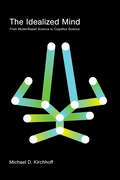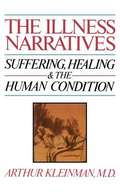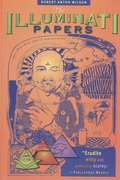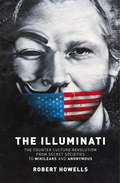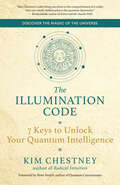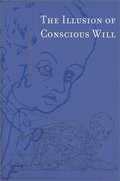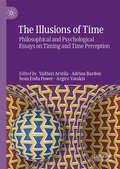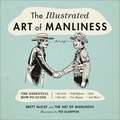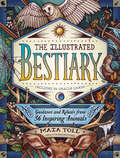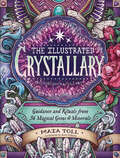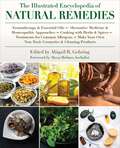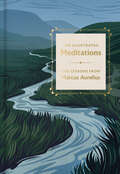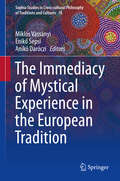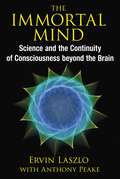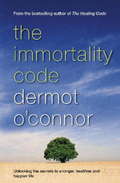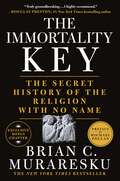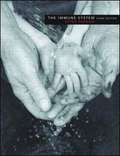- Table View
- List View
The IVF Diet: The plan to support IVF treatment and help couples conceive
by Zita WestThe definitive week-by-week diet and lifestyle plan to support IVF treatment and help you become pregnant from the one of the UK's foremost experts on fertility and conception, Zita West.'The IVF process is so out of your control and this was a really helpful tool to bring me back in control and nurture my body' -- ***** Reader review'Excellent book, a great way to feel like you have some control over this crazy process!' -- ***** Reader review'Terrific and informative - worth every penny' -- ***** Reader review'Easy to read and easy to understand' -- ***** Reader review'Brilliant' -- ***** Reader review****************************************************************************************************More and more couples are turning to IVF each year to help them conceive, and yet there are still many questions to be answered. "What makes IVF successful?" and "what else can we do to support our treatment?" are two of the most important queries couples can have, and here, Zita West offers solutions.Nutrition and lifestyle advice, psychological and emotional support and a positive mindset all play an important part in helping couples conceive, and can even make the difference between a successful and unsuccessful outcome.This book not only advises how to prepare for IVF, but why it's so important to prepare, and with a step-by-step diet and lifestyle plan and over 60 recipes for meals designed for optimum fertility heath, this is a clear way to actively support your treatment.
The IVF Guide: What You Need to Know About Fertility, Infertility and Available Treatment Options
by Ahmet Ozyigit Savas OzyigitIVF Treatment is a very personal journey- one with ups and downs. While there might be loads of information on infertility out there, it is very difficult to find the right information that fits your unique needs. Search for the right treatment option begins with the understanding that every patient is unique and standard treatments do not produce the same outcome for everyone.°This concise and accessible overview of reproductive medicine in the 21st century seeks to demystify in vitro fertilization for prospective parents and students. The IVF Treatment Guide walks readers through the fundamentals of human reproductive anatomy and physiology as well as disease processes that cause infertility. This guidebook also highlights various fertility testing methods and treatment options that are currently available or on the horizon. By blending the latest in scientific and medical research with the authors' own clinical experience, The IVF Treatment Guide offers unique insights into the science and art of reproductive medicine and in vitro fertilization.°The growing phenomenon of medical tourism has enabled prospective parents to transcend physical borders, local regulations, and monetary restrictions with just a passport and an airline ticket. Countries across the globe now offer high-quality fertility testing and treatment, often at a fraction of the cost. The IVF Treatment Guide empowers prospective parents to ask the right questions and make the best decisions for themselves and their families.
The Ice Diet
by Peta BeeSuper-charge your body's calorie-burning powers to change the way you look and feel forever.Based on cutting-edge scientific research, The Ice Diet reveals natural ways to beat weight gain by firing up your body's metabolism to fight flab.Health and diet expert Peta Bee has devised a unique six-week plan in three easy-to-follow stages that focus on your diet, fitness and lifestyle. It's the secret Hollywood celebrities have known for some time - cool temperatures in your diet and lifestyle unleash your body's fat-fighting ability to give you the body nature always intended you to have.- Understand the difference between good and bad body fat- Eat supercool foods- Discover how spices can accelerate slimming- Transform your exercise routine to maximize weight lossPeta's delicious meal plans will excite your taste buds and fuel your body to burn excess calories. The Ice Dietis the ultimate fast-track to weight loss, providing dramatic and life-changing results.
The Idealized Mind: From Model-Based Science to Cognitive Science
by Michael D. KirchhoffA defense of scientific realism based on the role of idealization in the cognitive sciences.We study nature, including the mind and brain, by building scientific models. In The Idealized Mind, Michael Kirchhoff brings together ideas from the philosophy of cognitive science and the philosophy of science to reconcile scientific realism with model-based science. His defense of scientific realism—the view that one reasonable aim of science is to provide true (or approximately true) descriptions of reality—is based on the role of idealization in the cognitive sciences. Idealization, he claims, is inevitable in cognitive science; at the same time, any understanding of the mind and brain must show how it is possible for scientific models to be reliably used to make truth-conditional assertions about their target phenomena.A central error in most theorizing about the mind, Kirchhoff claims, is to confuse the properties of scientific models with those of the system being modeled. But scientific models are, almost exclusively and unavoidably, idealizations of the world we seek to understand. They are descriptions of hypothetical systems, things that do not actually exist in nature. Specifically, Kirchhoff uses insights on idealization in science to assess the status and standing of three foundational issues in cognitive science: neural representation, neural computation, and the prospects for explanatory unification. He also explains why it is a mistake to approach neural representation and neural computation through the metaphysical stances of realism, fictionalism, or eliminativism.
The Illness Narratives: Suffering, Healing, And The Human Condition
by Arthur KleinmanA Harvard psychiatrist and anthropologist argues that interpreting the illness experience is an art tragically neglected by modern medical training, and presents a compelling case for bridging the gap between patient and doctor. Based on twenty years of clinical experience studying and treating chronic illness, a Harvard psychiatrist and anthropologist argues that diagnosing illness is an art tragically neglected by modern medical training, and presents a compelling case for bridging the gap between patient and doctor.
The Illuminati Papers
by Robert Anton WilsonIa all of history a vast conspiracy? Cosmic joke?Robert Anton Wilson developed the story of the Illuminati, a conspiracy as old as time itself, as a vehicle to amuse and enlighten. His best-selling books, The Illuminati Trilogy and Cosmic Trigger, have delighted readers the world over and made the Illuminati conspiracy the perfect metaphor for our time. In the ILLUMINATI PAPERS, Robert Anton Wilson speaks through characters from his novels and other realities and presents his views on our future way of life.IncludesThe HEAD RevolutionSecrets of EvolutionHow to Eliminate StupidityIlluminati Interoffice MemosThe Position Papers of Hagbard CelineEconomic LiberationThe Usual Gang of Lunatics, Mystics, and Characters Clamoring for a New Social Order
The Illuminati: The Counter Culture Revoultion from Secret Societies to Wikileaks and Anonymous
by Robert HowellsThis book demonstrates that the old secret societies were driven by the same impulse as Anonymous and WikiLeaks are today. These marginalized groups have always rebelled against the establishments; some subversively by spreading progressive ideas through art and literature, while others are far more proactive, driving revolution and exposing government secrets. The Illuminati, founded in 1776, aimed to rid Europe of the ruling aristocracy and religious control of education, politics and science. They supported the Age of Enlightenment and were accused of fueling the dissent that culminated in the French Revolution. Since that time the term Illuminati has become a meme, giving a name to a secret network believed by conspiracy theorists to control the world. These were depicted as pranksters, working in the shadows to manipulate society. It was in this climate of pranks, memes and conspiracy theories that the hacktivist collective Anonymous were born. Their ideals of freedom from censorship and the empowering of societies against their rulers make them the spiritual successors of the Illuminati. The kindling of the French Revolution by the Illuminati has found a modern counterpart in how Anonymous and WikiLeaks played a key role in the Arab Spring uprisings using the internet as a new weapon against dictatorships. It is the same battle fought by secret societies for a millennium but the new inquisition has shifted its focus from secret societies to wage a war on the connected communities of the internet age. This is the story of that war and how you need to be a part of it.
The Illumination Code: 7 Keys to Unlock Your Quantum Intelligence
by Kim Chestney“Kim Chestney’s codes bring you closer to the comprehension of a reality that was wholly hidden prior to the quantum discoveries.” — Ervin László, author of Science and the Akashic Field Intuition — the extraordinary ability to access information from the quantum realms — is fast becoming humanity’s most advanced form of knowledge acquisition. The Illumination Code presents seven keys to unlock your inner dimension so you can access expanded states of awareness that exist beyond the limits of the rational mind. Kim Chestney reveals the deeply personal nature of the universe while offering a new way to know the unknowable and experience the seemingly impossible. As you venture inward on this step-by-step journey, you will gain profound insights and discover the true power of your own inner wisdom.
The Illusion of Conscious Will
by Daniel M. WegnerSelected as a Finalist in the category of Psychology/Mental Health in the 2002 Independent Publisher Book Awards (IPPYs) presented by Independent Publisher Magazine, Silver Award Winner for Philosophy in the 2002 Fore Word Magazine Book of the Year Awards, and Selected as an Outstanding Academic Book for 2002 by Choice Magazine. Do we consciously cause our actions, or do they happen to us? Philosophers, psychologists, neuroscientists, theologians, and lawyers have long debated the existence of free will versus determinism. In this book Daniel Wegner offers a novel understanding of the issue. Like actions, he argues, the feeling of conscious will is created by the mind and brain. Yet if psychological and neural mechanisms are responsible for all human behavior, how could we have conscious will? The feeling of conscious will, Wegner shows, helps us to appreciate and remember our authorship of the things our minds and bodies do. Yes, we feel that we consciously will our actions, Wegner says, but at the same time, our actions happen to us. Although conscious will is an illusion, it serves as a guide to understanding ourselves and to developing a sense of responsibility and morality. Approaching conscious will as a topic of psychological study, Wegner examines the issue from a variety of angles. He looks at illusions of the will--those cases where people feel that they are willing an act that they are not doing or, conversely, are not willing an act that they in fact are doing. He explores conscious will in hypnosis, Ouija board spelling, automatic writing, and facilitated communication, as well as in such phenomena as spirit possession, dissociative identity disorder, and trance channeling. The result is a book that sidesteps endless debates to focus, more fruitfully, on the impact on our lives of the illusion of conscious will.
The Illusions of Time: Philosophical and Psychological Essays on Timing and Time Perception
by Adrian Bardon Valtteri Arstila Sean Enda Power Argiro VatakisThis edited collection presents the latest cutting-edge research in the philosophy and cognitive science of temporal illusions. Illusion and error have long been important points of entry for both philosophical and psychological approaches to understanding the mind. Temporal illusions, specifically, concern a fundamental feature of lived experience, temporality, and its relation to a fundamental feature of the world, time, thus providing invaluable insight into investigations of the mind and its relationship with the world. The existence of temporal illusions crucially challenges the naïve assumption that we can simply infer the temporal nature of the world from experience. This anthology gathers eighteen original papers from current leading researchers in this subject, covering four broad and interdisciplinary topics: illusions of temporal passage, illusions and duration, illusions of temporal order and simultaneity, and the relationship between temporal illusions and the cognitive representation of time.
The Illustrated Art of Manliness: Survival Chivalry Self-Defense Style Car Repair And More!
by Brett Mckay Ted SlampyakAn indispensable, hands-on guide dedicated to the lost art of being a man, The Illustrated Art of Manliness distills more than 100 practical skills every modern man needs to know into an entertaining, easy-to-follow visual format. Founder of The Art of Manliness Brett McKay and bestselling illustrator Ted Slampyak write brilliantly illustrated articles to help men be the best fathers, brothers, sons, and men they can be. This book features their most essential work alongside dozens of never-before seen guides on subjects ranging from chivalry and self-defense to courage and car repair, including: How to disarm an attacker How to fell a tree and start a fire anywhere How a car engine works, and how to fix it How to use every tool in your toolbox What to wear on a first date and to a job interview How to lead a meeting and command the attention of a room How to dance, fight, shave, shake a hand, pick a lock, and fire a gun And other advice for when you're lost, in danger, or merely confronting a shirt that needs to be ironed. The Illustrated Art of Manliness features a classic, timeless package, including full-color illustrations, and will be a perfect gift for you or the man in your life.
The Illustrated Bestiary: Guidance and Rituals from 36 Inspiring Animals (Wild Wisdom)
by Maia TollPeople across cultures and through the centuries have felt a spiritual, symbolic connection to animals. In The Illustrated Bestiary, author and spiritual wellness guide Maia Toll turns the insight and wisdom that birthed The Illustrated Herbiary — her best-selling volume on the mystical power of plants — to the animal kingdom. Through profiles highlighting 36 animals&’ most meaningful traits, Toll explores how those qualities can illuminate our habits, guide our intentions, and inform our actions. Spring Peeper&’s ability to reemerge from frozen hibernation can inspire us to reinvent ourselves. Katydid&’s five eyes can lend clarity of vision when we need to see the bigger picture. Rituals and reflections guide readers in cultivating each animal&’s energy, while 36 oracle cards featuring art by Kate O&’Hara further shape readers&’ meditations. From the humble House Mouse to the magnificent Elephant, this beautifully illustrated guide to animal spirits provides new ways of connecting with the creatures that walk, crawl, slither, swim, and fly. This publication conforms to the EPUB Accessibility specification at WCAG 2.0 Level AA.
The Illustrated Crystallary: Guidance and Rituals from 36 Magical Gems & Minerals (Wild Wisdom)
by Maia TollIn the ancient world there were three medicine kingdoms: animal, vegetable, and mineral. Following her previous acclaimed volumes on animal (The Illustrated Bestiary) and vegetable (The Illustrated Herbiary), Maia Toll fulfills the call for mineral with The Illustrated Crystallary, exploring the mystical qualities of 36 fascinating crystals and minerals, including amethyst, hematite, mica, smokey quartz, emerald, ruby, and more. Combining bits of ancient wisdom with her own insights, Toll illuminates the aspects and energy of each stone and, through rituals and reflections, the life guidance it might offer contemporary readers. Obsidian&’s shiny surface and sharp edges reflect the shadowy corners of the self and serve as the tool for cutting them loose. The sky-like color of earthly turquoise provides balance between opposing forces. Stunning illustrations by Kate O&’Hara magnify the symbolism of each crystal. This publication conforms to the EPUB Accessibility specification at WCAG 2.0 Level AA. Also available: The Illustrated Herbiary Collectible Box Set and The Illustrated Bestiary Collectible Box Set.
The Illustrated Encyclopedia of Natural Remedies
by Abigail GehringMore than 100 Remedies and Recipes for Vibrant Health! Packed with step-by-step instructions to make your own herbal remedies, simple recipes for cooking with herbs and spices, and beautiful photographs, this might be the most comprehensive guide to natural remedies ever published. Here readers can learn about alternative medicine and homeopathic approaches, aromatherapy and essential oils, and much, much more. Natural Healing for Common Ailments Cooking with SuperfoodsJuices & CleansesEdible Wild Plants Planning an Herb GardenEveryday Treatments for Women & ChildrenNatural Cleansers for the HomeHomemade Non-Toxic CosmeticsRevitalizing Tinctures & ShotsAnti-Inflammatory Foods Take charge of your family's health and well-being with this comprehensive guide.
The Illustrated Field Guide to DMT Entities: Machine Elves, Tricksters, Teachers, and Other Interdimensional Beings
by David Jay Brown Sara Phinn Huntley• Examines 25 of the most commonly encountered DMT entities, from machine elves and fairies to insectoids, Reptilians, and divine beings such as Grandmother Ayahuasca• Discusses each entity in depth, including people&’s encounters with them from trip reports and scientific studies, descriptions of how the entities appear and behave, and communications or teachings they impart• Features visionary art by Sara Phinn Huntley and other artists, including Alex Grey, Andrew Jones, Luke Brown, Juliana Garces, Erial Ali, and Harry PackOne of the features consistently noted by visitors to the hyperspace realm invoked by DMT is the existence of many different entities. In this full-color illustrated handbook for understanding the intelligent alien species of hyperspace, psychedelic explorer David Jay Brown and visionary artist Sara Phinn Huntley explore 25 of the most commonly encountered DMT beings and ayahuasca spirits, from &“self-transforming machine elves,&” ancestor spirits, tricksters, and metallic spheres to insectoid mantis beings, reptilians, gray aliens, nature spirits, and divine beings, such as the Virgin Mary, Gaia, angels, Grandmother Ayahuasca, and deities from Hindu, Egyptian, and South American spiritual traditions.Profiling the DMT entities in the style of a naturalistic field guide, complete with evocative illustrations by Huntley and other artists such as Alex Grey, Andrew Jones, Luke Brown, Juliana Garces, Erial Ali, and Harry Pack, the authors discuss the entities in depth, including people&’s encounters with them, descriptions of how they appear, and summaries of the communications they impart. They explore whether these beings are generated by our minds or if they exist independently of the DMT trip.Providing a comprehensive exploration of this world, this guide seeks to describe the alien residents of interdimensional space and help people who have encountered DMT beings integrate their experiences.
The Illustrated Herbiary: Guidance and Rituals from 36 Bewitching Botanicals (Wild Wisdom)
by Maia TollCelebrate the wild wisdom of 36 herbs, fruits, and flowers in this award-winning book by herbalist Maia Toll, featuring rich illustrations by artist Kate O&’Hara, and oracle cards for each plant to help guide your personal reflections. Rosemary is for remembrance; sage is for wisdom. Would meditating on the starflower help heal you? Does the spirit of sweet violet have something to offer you today? Contemporary herbalist Maia Toll, author of The Illustrated Bestiary and The Illustrated Crystallary, profiles the mystical, magical, bewitching personalities of 36 powerful herbs, fruits, and flowers in this stunning volume. The book includes a deck of 36 beautifully illustrated oracle cards — one for each plant — and ideas for readings and rituals to help you access your intuition, navigate each day's joys and problems, and tap into each plant's unique powers for healing, guidance, and wisdom. Also available: The Illustrated Bestiary, The Illustrated Crystallary, Maia Toll's Wild Wisdom Companion, The Illustrated Herbiary Collectible Box Set, The Illustrated Bestiary Collectible Box Set, The Illustrated Herbiary Oracle Cards, The Illustrated Bestiary Oracle Cards, The Illustrated Crystallary Oracle Cards, The Illustrated Herbiary Puzzle, The Illustrated Bestiary Puzzle, The Illustrated Crystallary Puzzle, and Maia Toll's Wild Wisdom Wall Calendar.
The Illustrated Meditations: Life Lessons from Marcus Aurelius
by Marcus AureliusStunning artworks bring more than sixty reflections from the iconic Stoic work Meditations by Marcus Aurelius to vivid life."What is not good for the hive is not good for the bee either." —Marcus AureliusRoman Emperor and philosopher Marcus Aurelius wrote the twelve books of Meditations over two thousand years ago as a personal diary of notes, nudges, and mental exercises to help him live a good life. His work has since become one of the greatest works of spiritual reflection ever written—required reading for statespersons and philosophers and inspiration to generations of readers who have responded to the intimacy of his writing. With their gentle instructions on living stoically, in harmony with nature, and in pursuit of the common good, Aurelius's lessons still resonate today, helping us manage the modern malaise.This beautifully designed book features a curated selection from modern philosopher James Romm of the most significant life lessons, arranged in chapters that touch on the mind, living well, nature, community, compassion, time, death, and more. Woodcut-style art adds texture and color to the pages, illustrating the concepts of each lesson in the book. Chapter introductions explain each lesson's history and philosophy, and throughout, modern philosophical commentary expands on each lesson, making this a perfect Stoic starting point and gift for anyone who loves ancient philosophy.
The Immediacy of Mystical Experience in the European Tradition
by Miklós Vassányi Enikő Sepsi Anikó DarócziThis volume examines mystical experiences as portrayed in various ways by "authors" such as philosophers, mystics, psychoanalysts, writers, and peasant women. These "mystical authors" have, throughout the ages, attempted to convey the unsayable through writings, paintings, or oral stories. The immediate experience of God is the primary source and ultimate goal of these mystical expressions. This experience is essentially ineffable, yet all mystical authors, either consciously or unconsciously, feel an urge to convey what they have undergone in the moments of rapture. At the same time they are in the role of intermediaries: the goal of their self-expression - either written, painted or oral - is to make others somehow understand or feel what they have experienced, and to lead others toward the spiritual goal of human life. This volume studies the mystical experiences and the way they have been described or portrayed in West-European culture, from Antiquity to the present, from an interdisciplinary perspective, and approaches the concept of "immediate experience" in various ways.
The Immortal Mind: Science and the Continuity of Consciousness beyond the Brain
by Ervin Laszlo Anthony PeakeScientific evidence for the continual presence of consciousness with or without connection to a living organism • Examines findings on the survival of consciousness beyond life, including near-death experiences, after-death communication, and reincarnation • Explains how this correlates precisely with cutting-edge physics theories on superstrings, information fields, and energy matrices • Reveals how consciousness manifests in living beings to continue its evolution Evidence now points to consciousness existing beyond the brain, such as when the brain is temporarily incapacitated, as well as to the survival of consciousness after death. Conventional science prefers to dismiss these findings because they cannot be accommodated by a materialist view of reality. Spirituality and religion embrace the continuity of consciousness and ascribe it to a nonmaterial spirit or soul that is immortal. As such, spirituality/religion and science continually find conflict in their views. But what if there truly is no conflict? Based on a new scientific paradigm in sync with experience-based spirituality, Ervin Laszlo and Anthony Peake explore how consciousness is continually present in the cosmos and can exist without connection to a living organism. They examine the rapidly growing body of scientific evidence supporting the continuity of consciousness, including near-death experiences, after-death communication, reincarnation, and neurosensory information received in altered states. They explain how the persistence of consciousness beyond the demise of the body means that, in essence, we are not mortal--we continue to exist even when our physical existence has come to an end. This correlates precisely with cutting-edge physics, which posits that things in our plane of time and space are not intrinsically real but are manifestations of a hidden dimension where they exist in the form of superstrings, information fields, and energy matrices. With proof that consciousness is basic to the cosmos and immortal in its deeper, nonmanifest realm, Laszlo and Peake reveal the purpose of consciousness is to manifest in living beings in order to continuously evolve.
The Immortality Code
by Dermot O'ConnorThe Immortality Code provides a structured programme to maintain and promote health and vigour, develop self-confidence, improve mental clarity and enhance youthful appearance. This code draws upon powerful time-proven health approaches from the East together with established and cutting-edge evidence-based methods from Western medical science.Dermot argues that ageing no longer means a decline in physical and mental health. By following his tips and techniques, it's possible to extend and even develop good health as you grow older. The code reveals how to strengthen hearts, reduce the risk of cancer, revitalise your brain, improve physical appearance, prevent and overcome a variety of degenerative diseases and, therefore, to avoid many of the major causes of aging and premature death. This comprehensive plan integrates approaches to stress reduction, enhancing emotional health and life contentment, achieving optimum nutrition, rebalancing hormone levels, fortifying immunity and creating good physical fitness.This life-changing guide offers everything you need to stay young and in peak condition for decades to come.
The Immortality Code
by Dermot O'connorThe Immortality Code provides a structured programme to maintain and promote health and vigour, develop self-confidence, improve mental clarity and enhance youthful appearance. This code draws upon powerful time-proven health approaches from the East together with established and cutting-edge evidence-based methods from Western medical science.Dermot argues that ageing no longer means a decline in physical and mental health. By following his tips and techniques, it's possible to extend and even develop good health as you grow older. The code reveals how to strengthen hearts, reduce the risk of cancer, revitalise your brain, improve physical appearance, prevent and overcome a variety of degenerative diseases and, therefore, to avoid many of the major causes of aging and premature death. This comprehensive plan integrates approaches to stress reduction, enhancing emotional health and life contentment, achieving optimum nutrition, rebalancing hormone levels, fortifying immunity and creating good physical fitness.This life-changing guide offers everything you need to stay young and in peak condition for decades to come.
The Immortality Key: The Secret History of the Religion with No Name
by Brian C. MurareskuTHE NEW YORK TIMES BESTSELLER As seen on The Joe Rogan Experience! A groundbreaking dive into the role psychedelics have played in the origins of Western civilization, and the real-life quest for the Holy Grail that could shake the Church to its foundations. The most influential religious historian of the 20th century, Huston Smith, once referred to it as the "best-kept secret" in history. Did the Ancient Greeks use drugs to find God? And did the earliest Christians inherit the same, secret tradition? A profound knowledge of visionary plants, herbs and fungi passed from one generation to the next, ever since the Stone Age? There is zero archaeological evidence for the original Eucharist – the sacred wine said to guarantee life after death for those who drink the blood of Jesus. The Holy Grail and its miraculous contents have never been found. In the absence of any hard data, whatever happened at the Last Supper remains an article of faith for today’s 2.5 billion Christians. In an unprecedented search for answers, The Immortality Key examines the archaic roots of the ritual that is performed every Sunday for nearly one third of the planet. Religion and science converge to paint a radical picture of Christianity’s founding event. And after centuries of debate, to solve history’s greatest puzzle. Before the birth of Jesus, the Ancient Greeks found salvation in their own sacraments. Sacred beverages were routinely consumed as part of the so-called Ancient Mysteries – elaborate rites that led initiates to the brink of death. The best and brightest from Athens and Rome flocked to the spiritual capital of Eleusis, where a holy beer unleashed heavenly visions for two thousand years. Others drank the holy wine of Dionysus to become one with the god. In the 1970s, renegade scholars claimed this beer and wine – the original sacraments of Western civilization – were spiked with mind-altering drugs. In recent years, vindication for the disgraced theory has been quietly mounting in the laboratory. The constantly advancing fields of archaeobotany and archaeochemistry have hinted at the enduring use of hallucinogenic drinks in antiquity. And with a single dose of psilocybin, the psychopharmacologists at Johns Hopkins and NYU are now turning self-proclaimed atheists into instant believers. But the smoking gun remains elusive. If these sacraments survived for thousands of years in our remote prehistory, from the Stone Age to the Ancient Greeks, did they also survive into the age of Jesus? Was the Eucharist of the earliest Christians, in fact, a psychedelic Eucharist? With an unquenchable thirst for evidence, Muraresku takes the reader on his twelve-year global hunt for proof. He tours the ruins of Greece with its government archaeologists. He gains access to the hidden collections of the Louvre to show the continuity from pagan to Christian wine. He unravels the Ancient Greek of the New Testament with the world’s most controversial priest. He spelunks into the catacombs under the streets of Rome to decipher the lost symbols of Christianity’s oldest monuments. He breaches the secret archives of the Vatican to unearth manuscripts never before translated into English. And with leads from the archaeological chemists at UPenn and MIT, he unveils the first scientific data for the ritual use of psychedelic drugs in classical antiquity. The Immortality Key reconstructs the suppressed history of women consecrating a forbidden, drugged Eucharist that was later banned by the Church Fathers. Women who were then targeted as witches during the Inquisition, when Europe’s sacred pharmacology largely disappeared. If the scientists of today have resurrected this technology, then Christianity is in crisis. Unless it returns to its roots. Featuring a Foreword by Graham Hancock, the NYT bestselling author of America Before.
The Immune System (3rd edition)
by Peter ParhamParham (structural biology, microbiology, immunology, Stanford U.) offers a third edition to his textbook explaining the functions of the human immune system. It is specifically intended for undergraduate students in medical, dental, and pharmacy in immunology courses. Extensively updated, the textbook includes new chapters on innate and adaptive immunity, enhanced treatment of aspects of innate immunity such as the complement system and defensins, immunotherapies, and the nature of immune response in mucosal tissues and immunological memory. It is well-illustrated and includes essay, multiple choice, and case study questions at the conclusion of each chapter. Annotation ©2009 Book News, Inc., Portland, OR (booknews.com)
The Immune System Recovery Plan: A Doctor's 4-Step Program to Treat Autoimmune Disease
by Dr Susan Blum M.D., M.P.H"The Immune System Recovery Plan is the right book, at the right time, by the right person. We are witnessing a significant increase in autoimmune inflammatory diseases, which include more than 80 different diagnoses. Dr. Blum has done a magnificent job helping the reader to understand how this family of inflammatory disorders, including arthritis and fibromyalgia, can be managed with the diet and lifestyle program she developed in her practice. Her step-by-step approach is based on her considerable years of experience as a physician, and the emerging medical science that, for the first time, has developed an understanding of how genetics, lifestyle and nutrition play a role in origin of these disorders. The approach described in Dr. Blum's book represents the leading edge in the lifestyle management of chronic inflammatory disorders. It is a 'news to use' book that provides real assistance to those with inflammatory disorders who are looking for a clinically sensible approach to their problems." (Jeffrey Bland, Ph.D., FACN, President, Personalized Lifestyle Medicine Institute)The innovative four-step method in this book focuses on:Using food as medicineUnderstanding the stress connectionHealing your gut and digestive systemOptimizing liver functionEach of these sections includes an interactive workbook to help you determine and create your own personal treatment program. Also included are recipes for simple, easy-to-prepare dishes to jump-start the healing process.The Immune System Recovery Plan is a revolutionary way for people to balance their immune systems, transform their health, and live fuller, happier lives.
The Immune System Recovery Plan: A Doctor's 4-Step Program to Treat Autoimmune Disease
by Susan BlumThe bestselling book with 100,000 copies in print from one of the most sought-after experts in the field of functional medicine, Dr. Susan Blum, author of Healing Arthritis, shares the four-step program she used to treat her own serious autoimmune condition and help countless patients reverse their symptoms, heal their immune systems, and prevent future illness.DR. BLUM ASKS: • Are you constantly exhausted? • Do you frequently feel sick? • Are you hot when others are cold, or cold when everyone else is warm? • Do you have trouble thinking clearly, aka &“brain fog&”? • Do you often feel irritable? • Are you experiencing hair loss, dry skin, or unexplained weight fluctuation? • Do your joints ache or swell but you don&’t know why? • Do you have an overall sense of not feeling your best, but it has been going on so long it&’s actually normal to you? If you answered yes to any of these questions, you may have an autoimmune disease, and this book is the &“medicine&” you need. Among the most prevalent forms of chronic illness in this country, autoimmune disease affects nearly 23.5 million Americans. This epidemic—a result of the toxins in our diet; exposure to chemicals, heavy metals, and antibiotics; and unprecedented stress levels—has caused millions to suffer from autoimmune conditions such as Graves&’ disease, rheumatoid arthritis, Crohn&’s disease, celiac disease, lupus, and more. DR. BLUM&’S INNOVATIVE METHOD FOCUSES ON: • Using food as medicine • Understanding the stress connection • Healing your gut and digestive system • Optimizing liver function Each of these sections includes an interactive workbook to help you determine and create your own personal treatment program. Also included are recipes for simple, easy-to-prepare dishes to jump-start the healing process. The Immune System Recovery Plan is a revolutionary way for people to balance their immune systems, transform their health, and live fuller, happier lives.



